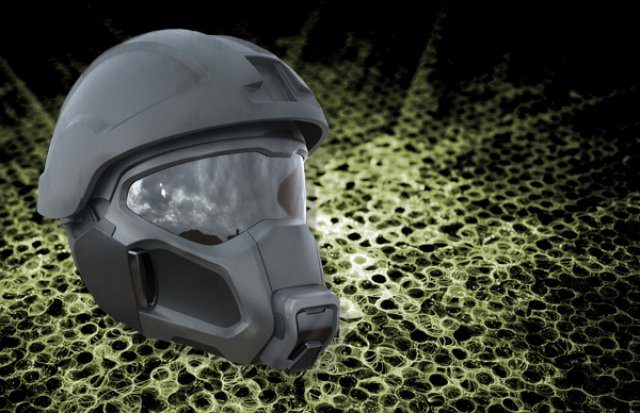It’s hot. Humidity is near 100 percent, and you’re in full combat gear — including chemical-biological protection. Between your helmet and mask, your entire head is covered, leaving a sensation of suffocating heat. Sweat pours as you run, climb and crawl through enemy territory. How can you get through it?
A fan blows soothing air across your face, under the tight-fitted mask.
Technology brings this relief to a Soldier through a powered air purifying respirator, which consists of a hose connected to the face mask from a blower unit and battery pack hanging off the hip or back. A typical respirator is heavy and cumbersome, adding to the weight of the equipment troops already carry.
In 2013, Edgewood Chemical Biological Center scientists began designing concepts for the next generation of chemical, biological, radioactive and nuclear respirators. They developed a fan embedded within the mask’s filtration system that uses less power, is lighter and is far less bulky than conventional respirators. In addition to reduced weight and power requirements, this system offers major improvements to the level of comfort and effectiveness of the mask.
The mini-blower works by pulling air through a filtration system on the side of the mask and sweeping it across the nose cup to allow for even flow across the face. When the user exhales, the air valve closes and diverts all of the clean filtered air into the mask’s eye cavity to over-pressurize the face piece, preventing any potential for outside contaminates to enter the mask should there be a break in the seal.
In test studies, a modified, commercial version of the M50 joint service general purpose mask has proven to be more comfortable to a Soldier, and maintains the same or greater effectiveness when crawling, running, or during rifle exercises and combat maneuvers. These technology demonstrations produced real-time data on mask protection factors, thermal sensation and comfort to the Soldier.
Edgewood Chemical Biological Center’s Respiratory Protection Branch continues to develop multiple technologies, anticipating integration with next-generation helmet and communication system designs and user needs.
As the team looks ahead, they anticipate a mask that is able to sense when the fan needs to come on and when it should shut off based on physiological monitoring, and the ability of the user to control the scalability (operational mode) of the system: fan off, fan on with airflow just to the eye cavity or fan on with airflow to both the eye cavity and nose cup.
–
Edgewood Chemical Biological Center is part of the U.S. Army Research, Development and Engineering Command, which has the mission to develop technology and engineering solutions for America’s Soldiers.
The Research, Development and Engineering Command is a major subordinate command of the U.S. Army Materiel Command. AMC is the Army’s premier provider of materiel readiness — technology, acquisition support, materiel development, logistics power projection, and sustainment — to the total force, across the spectrum of joint military operations. If a Soldier shoots it, drives it, flies it, wears it, eats it or communicates with it, AMC provides it.











